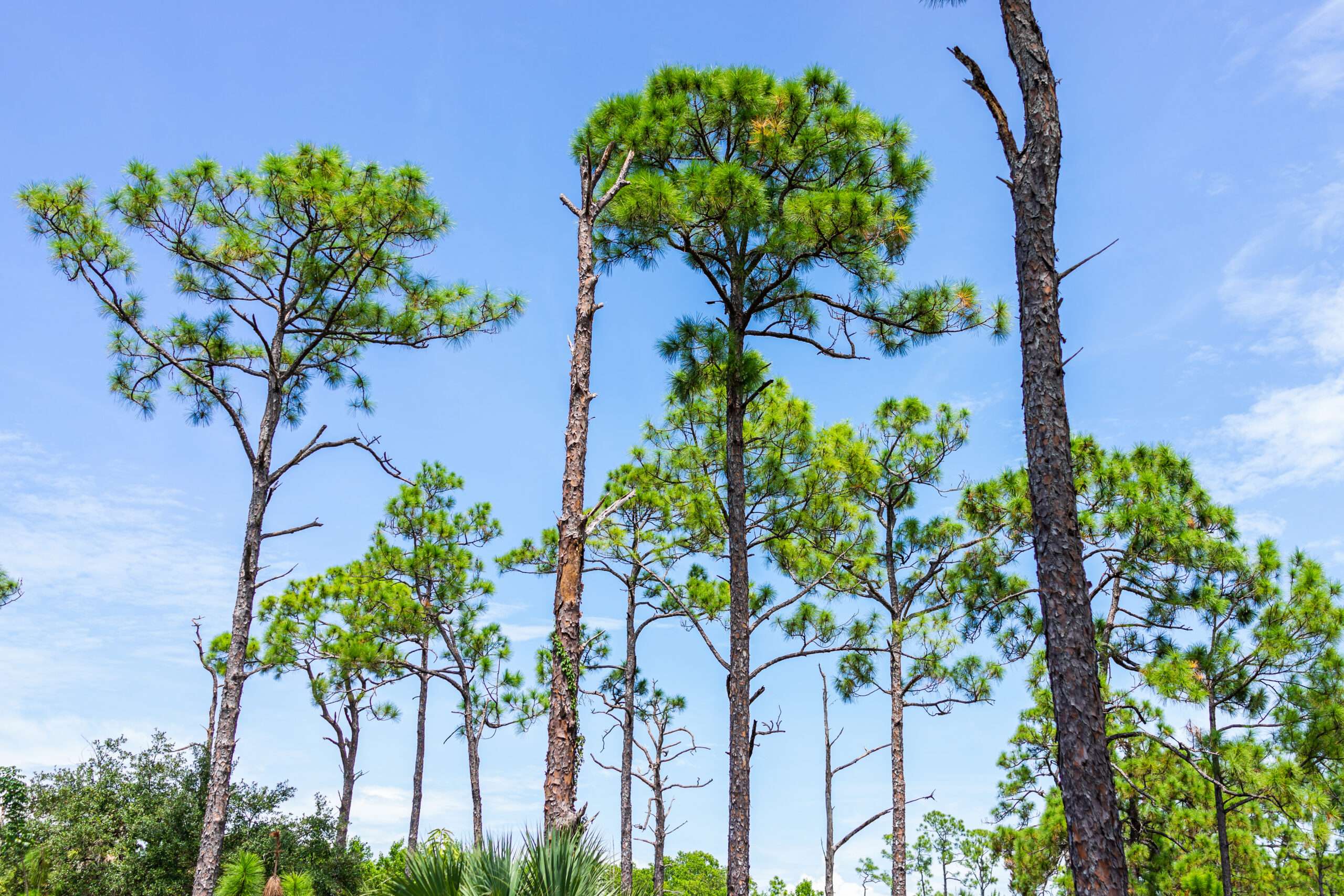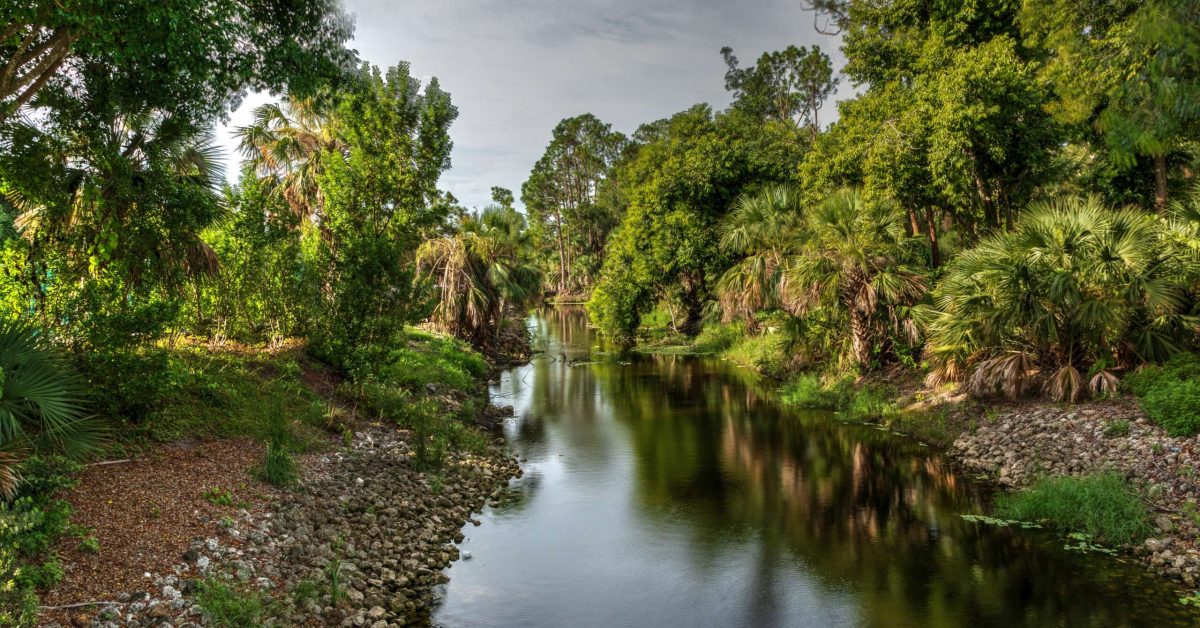Southwest Florida Land Preservation Trust mission: “To facilitate public and private interests in creating and preserving the Gordon River Greenway in Collier County for public use, recreation, resource protection and natural area preservation within the riverine system.”
In 1988, a group of young Collier County professionals who were concerned about the rapid pace of development in the county started the nonprofit Southwest Florida Land Preservation Trust to explore buying land for conservation purposes.
The founding directors were landscape architect Ellin Goetz; Miles Collier of Collier Enterprises; Lanny Sherwin, then owner and publisher of Gulfshore Life magazine; now-State Senator and Senate President Kathleen Passidomo, who was then an attorney; Dick Grant, attorney; the late architect Alfred French; Rick Barber, civil engineer; and Eileen Arsenault, then a board member of Audubon of the Western Everglades and now president of that board; and executive director Ellie Krier, who still serves in that role.
They soon discovered that the cost of buying significant lands around Collier County would be prohibitive (even in the late 1980s), and after about a year the group pivoted to pursue the idea of creating what is now the Gordon River Greenway.
Fast-forward to 2023, and the current board of the SWFLPT (Land Trust) is ready to declare “mission accomplished” on the Gordon River Greenway and dissolve the organization.
Goetz, now with Goetz & Stropes Landscape Architects Inc., and a longtime conservation advocate, said in a late July phone interview that with the Greenway “happily thriving,” the board decided it would be a good time to start the process of dissolving the land trust.
In addition to Goetz, the board currently consists of Bill Barton, chair; Cathy Faerber; Clarence Tears; Dan Waters; Diane Flagg; John Sorey; Mark Slack; Matt Nolton; Matthew Kragh; Penny Briant; Rick Barber; Miles Scofield; Scott Cameron; Stephen Jaron; Alan Ryker; and original board members Arsenault and Grant.
In the recent phone interview, Goetz looked back at the history of the Land Trust and the Gordon River Greenway and reflected on the legacy of the organization.
Back to the Beginning: 1988-2004
“When the Trust was first founded, a greenway was not the mission,” Goetz explained. “It was purely to address concerns that land was getting developed at a very rapid pace and this was another tool in the land preservation toolbox. But after a year or so, when it became evident to us that the cost of buying significant lands around Collier County wouldn’t be possible, we pivoted.”
In 1987, the notion of a Gordon River Greenway had grown from a report following a visit to Collier County by the American Institute of Architects’ Regional Urban Design Assistance Team, according to a timeline on the Gordon River Greenway website.
“They brought in a team of planners and architects and looked comprehensively at Naples and published a series of reports, and one of those reports said, ‘There seems to be an opportunity for a land trust, and there also seems to be this opportunity along the Gordon River,’” Goetz said. “That study helped us initiate the Land Trust. The Greenway idea had been tossed around for a while as an opportunity because the lands around the Gordon River were not developed, and so it became something that made a lot of sense, but nobody was working on—so that’s when we pivoted and decided to focus on the establishment of a greenway along the Gordon River.”
That involved acquiring lands, and getting the parties that did own the land along the river to agree to the concept.
“It was all very remarkable,” Goetz recalled. “We were all pretty young and we all had no fear—because ignorance is bliss sometimes—and we brought together like-minded individuals from the business world and from the community. And it was unusual, because even back then there were big fights going on between development interests and conservation interests. We all felt that there was a way forward to work on issues together. That’s really how the whole thing started.”
It was a long, slow process, Goetz said, but a turning point for the Greenway came in 2004.
“Through the activities of the Land Trust pursuing the Greenway concept, there was a countywide referendum in 2004 [which passed by 73%] that resulted in the purchase of the land [then owned by the Fleischmann family] that is now where Naples Zoo is; it was the Zoo then, but it was owned by private entities,” Goetz said. “So, the county was able to purchase that parcel using public money and it became an important chunk of the Greenway corridor as a result of that.”
She said the Land Trust helped “shepherd through the politics” of the deal and that it took a “huge effort” to get the public to vote for it.
“But it made sense: they could identify, they understand where the Zoo was, and thank goodness they did, because that was really the key parcel to the whole equation,” Goetz said. “And the other great thing is that the airport is on the east side of the Greenway, and we worked hard with them to get easements to allow pathways to be built on their property that are part of the Greenway now. Some of them had to have boardwalks installed because they’re wetland. That’s really the beauty of the Land Trust: getting with these different entities and pitching them on the concept and sticking with it.”
According to the Gordon River Greenway website, “The county completed the construction and opened the Greenway Park on the Collier County Gordon River Greenway Park and the Conservation Collier Gordon River Greenway Preserve in 2014.” The website goes on to say that “the final piece of the Gordon River Greenway was complete in 2018 when the city of Naples completed the Blair Foundation Bridge that connects Baker Park to the existing trails, providing visitors with a 2-mile corridor extending from Golden Gate Parkway to the heart of Naples.”
 Looking Ahead
Looking Ahead
As the Land Trust dissolves, Goetz also reflected on “the balance between us and the natural worlds” and how to make those things compatible.
“Our future will be challenging just because of everything that’s been going on in the greater world, I think, and the fact that for Collier County, people still dream of coming here,” Goetz said. “The pandemic did what nobody expected and made it even more attractive to people.”
Goetz also said she thinks the affordable workforce housing issue is going to affect every aspect of development moving forward.
Legacy of the Land Trust
Goetz said she thinks a big part of the overall legacy of the Land Trust will be the fact that it stuck with the idea of the Gordon River Greenway, no matter the odds.
“It literally took 25 years to get the Greenway to the place where it is today, because of all the complications of land ownership, monies dedicated to building it—all of that,” Goetz said. “That is unusual; to stick to something for 25 years is, I think, quite an amazing accomplishment. When I’m on the Greenway and I look at all these people enjoying it, doing exactly what we wanted to have happen, which is being outdoors with their friends and family enjoying the natural environment—including the beautiful Baker Park—and being in this network that goes right through the heart of Naples, minutes from downtown. That’s a remarkable thing, to think that vision of so many years ago was actualized, despite all the pitfalls. Anyone can go there, on their bike, or park their car and walk, and it’s truly remarkable to see this exploration and enjoyment of a part of the county that was inaccessible.”
 Preserving other county lands: Conservation Collier
Preserving other county lands: Conservation Collier
Goetz said that while the Land Trust was focused on its mission of putting together parcels of land for the Greenway, the need was evident that there was still a place for a countywide land acquisition program.
“In 2000, a group of us—not affiliated with the Land Trust—independently got together and worked on getting a referendum on the ballot called Conservation Collier. This was copying what had been done all around the state of Florida, in various other counties,” Goetz said. “The referendum asked the citizens if they would be willing to have a small ad valorem tax on their property that would fund a program that would buy natural land countywide, and that’s what got approved. Through a willing-seller program, lands that meet very specific criteria would be nominated and purchased by the county and kept in perpetuity in a natural state with, importantly, public access abilities, if the land was suitable. That passed in 2002 by 60% of the electorate, which had never been done before in a majority Republican county.”
Goetz attributed the success of the campaign to the fact that it was run as a grassroots advocacy effort and didn’t become politicized.
“We learned from the Trust for Public Lands to do it as a grassroots effort, and stay away from the politics,” she said. “Nobody believed it would pass, but we were able to make the pitch and say you need to protect the land so that our water supply is protected, and a whole myriad of reasons. We did a private poll a month before the November election, and it showed the thing failing. I’ll never forget, we were like, ‘Well, we’re not going to stop now,’ so we had this crazy float that we put together for the swamp buggy parade because the timing was very good pre-election. It was a motley crew with a handmade float, little kids in green tee-shirts riding bicycles, volunteers handing out pamphlets, and I will never forget coming down 41 and hearing people in the crowd saying, ‘Oh yeah, great idea’ and that was the first time I thought ‘Maybe we could win this thing.’ You never know which way an election is going to go, but we were so euphoric when the thing passed. We just couldn’t believe it.”
Goetz said Conservation Collier is still “chugging along.”
“We had to bring it back to the ballot in 2006 because the [county] commission at that time wanted clarification on the language, so we had to do another campaign and it passed by an even bigger margin of 70%,” Goetz said. “The program was designed specifically to sunset after 10 years, which is good: You can tell voters hey, if the program doesn’t work it’s going to be sunset anyway. It could go back to a referendum on a ballot or the sitting county commission could reinstitute it … In the end we won all three campaigns, and the one in 2020—I love to say that Conservation Collier got more votes in 2020 than any presidential candidate on the ballot. And that really gets the county commission’s attention, because when they saw their districts having a 70%-87% approval of this initiative in 2020, one of our goals is to remind them of that as time goes along, because it’s something you have to protect for the public good.”
Goetz said that, as concerned citizens, she (who formerly served as chair of the PAC Yes Conservation Collier); Brad Cornell of Audubon Corkscrew Swamp Sanctuary and Audubon of the Western Everglades; and Meredith Budd of Live Wildly (and formerly of Florida Wildlife Federation) have engaged with the county commission as it goes through its budget process this summer. “We want to be sure they recognize the value and the importance this has to county residents,” she said. “Three times in a row [the voters] have said yes, and as we know, the issues get more and more hairy in terms of the stress between natural lands and development.”
This story was published Aug. 4 in The Naples Press.





